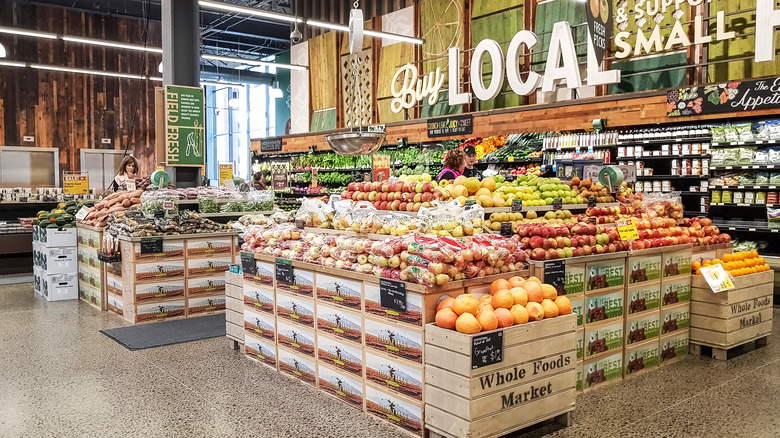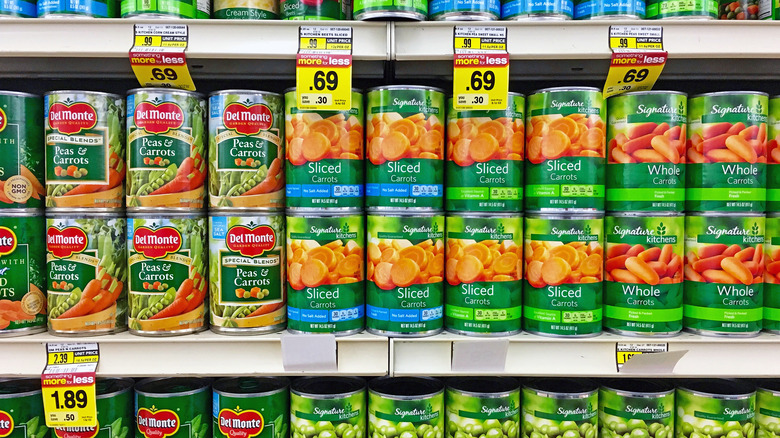Here's What The Yellow Tags At Whole Foods Mean
Raise your hand if you love Whole Foods! Trademarked as "America's Healthiest Grocery Store," Whole Foods has offered the world organic groceries with "fun and excitement" added to the shopping experience since its first store opened in 1980 (via Whole Foods Market). Today, the grocery store chain holds over 500 retail and non-retail locations across the U.S., Canada, and the U.K. with the mission of responsible sourcing, environmental stewardship, and high-quality, natural, and organic foods.
While the grocery store offers some of the widest natural and organic food options available, it does come with a price. The chain infamously earned its "whole paycheck" nickname due to its high-priced items, with customers paying an average of up to 20% more for groceries than competitor stores (via Investopedia).
Of course, like most stores, there are still deals you can score if you look carefully enough and strategically plan your shopping list. If you've ever been to Whole Foods, then you might be familiar with the Amazon Prime member deals. What do those yellow tags on certain items mean though?
Yellow tags mean massive discounts
Customers can save money by using their Amazon Prime membership for exclusive deals around the store, according to Whole Foods Market. Don't have an Amazon Prime membership? No problem. If you're looking to get your dose of healthy groceries for a fraction of the price, watch out for those yellow tags. According to Whole Foods via Twitter, the store offers more storewide sales through the marked colorful tags. "This year we're offering more storewide sales, indicated by yellow tags, which celebrates all of our customers while still offering Amazon Prime members an exclusive discount. We also will continue to offer 'blue tag' Prime Member Deals on seasonal favorites throughout the year."
Additionally, products are usually marked with yellow tags in hopes for the item to sell faster than other similar products due to discontinuation, rebranding, or a need to sell the grocery ahead of its expiration date (via Delish). With the yellow tags sprinkled throughout the store, consider them your budget saver next time you decide to shop at Whole Foods.

